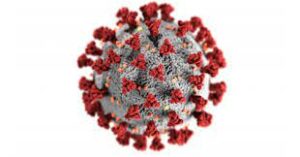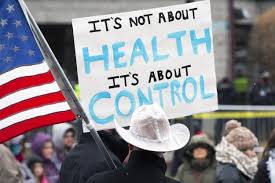Routine protocols for dealing with fast-spreading viral diseases have been reimagined as partisan ploys designed to destroy personal freedom.
 In the last year my colleagues who specialize in health communication have had to face a landscape of public opinion fissures beyond what most could have imagined. Health communication explores how we can acquire information that will allow us to make better personal choices. One of the triggers for this area of study was the realization decades ago that it was costing much more to treat seriously ill smokers than to educate them about the risks. Public health practitioners realized that they needed the help of people trained in the arts of shaping public opinion.
In the last year my colleagues who specialize in health communication have had to face a landscape of public opinion fissures beyond what most could have imagined. Health communication explores how we can acquire information that will allow us to make better personal choices. One of the triggers for this area of study was the realization decades ago that it was costing much more to treat seriously ill smokers than to educate them about the risks. Public health practitioners realized that they needed the help of people trained in the arts of shaping public opinion.
Many who do this kind of research could be forgiven for thinking that the route to control of a treatable malady is a straight path involving the conversion of the best expert advice into coherent messages, producing high levels of compliance. But no. By nature, humans are fantasists more than critical thinkers. If vaccine resistance has taken many of us by surprise, it is perhaps because we thought we understood the power of credible medical advice. But ask members of our species about material causes for a particular result, and some will manage to weave together alternate narratives that have no bases in fact.
There is irony in living in an information-rich age that also supports bubbles of completely looney “truths.” We never need to look far. Many of us have seen folks look a reporter in the eye an assert that the seditious acts of January 6 against certifying a new Democratic president were the work of the Democratic Party. Where do you start with these people?
The eradication of polio is a representative case. In the mid-1950s, Americans anxiously lined up their children for the first vaccine against the highly infectious disease that left thousands of children paralyzed. As medical historian David Oshinsky has noted,
 “If you had to pick a moment as the high point of respect for scientific discovery, it would have been then, After World War II, you had antibiotics rolling off the production line for the first time. People believed infectious disease was [being] conquered. And then this amazing vaccine is announced. People couldn’t get it fast enough.”
“If you had to pick a moment as the high point of respect for scientific discovery, it would have been then, After World War II, you had antibiotics rolling off the production line for the first time. People believed infectious disease was [being] conquered. And then this amazing vaccine is announced. People couldn’t get it fast enough.”
By early 1960, polio in the U.S. had been all but eliminated.
But this is not 1954. The pandemic has turned into an unforeseen world-wide experiment in how to manage the rapid transmission of a deadly virus while fighting off the dross of misleading messages. As it has turned out, and in spite of advances in immunology, helpful advice would have to outpace the lightning dissemination of misinformation, frequently with fantasies that a Hollywood screenwriter would have thought too outrageous. Perhaps eight to ten percent of the population is untethered to the ground, expressing phantom fears and wanting unobtainable guarantees of perfect safety.
Although many of us may owe our lives to the COVID vaccines that became available last March, widely expressed doubts about the helpfulness of masks, social distancing, and vaccines were triggered by this countermovement. It has expanded beyond the small core of anti-vaxxers and conspiracy-paranoids that have always been around. If we want to know how misguided public attitudes can be, we need look no further than many narratives that have turned treatment into a government plot. Routine protocols for dealing with fast-spreading viral diseases have been reimagined as partisan ploys designed to destroy freedom of action.
Thousands are going from hospital ICUs to their graves with the belief that COVID was a governmental plot
As this is written, only 48 percent of the residents of Alabama have gotten two doses of a COVID vaccine, with the predictable result of abnormally high per-capita death rates. Indeed, using the New York Times’ database derived from the CDC and other sources, some states like Idaho may not even know how many citizens have received vaccines. And the inequities of care within a single state can be vast. In Texas, 82 percent of the residents of Webb County are vaccinated, but only 21 percent in Gaines County.
 Core public health best practices for the control of the spread of disease have been known for decades, granting some variations for local factors like weather, the mobility of the population, and the variability of medical care. Even so, it is settled science that immunization and wearing facemasks can reduce the spread of infectious disease in Burlington Vermont as well as Miami. But against the uniformity of guidelines lies the darker immutability of human conduct. Again, our dilemma is that prior beliefs and fantasies are difficult to dislodge even with sound evidence. Overlay this resistance to new fantasies that political treatments are surreptitious tools of thought control, and suddenly medical staffs have been forced to deal with wild speculation as well as disease. Indeed, a small percentage—but maybe thousands–are going from hospital ICUs to their graves with the belief that COVID was a governmental plot.
Core public health best practices for the control of the spread of disease have been known for decades, granting some variations for local factors like weather, the mobility of the population, and the variability of medical care. Even so, it is settled science that immunization and wearing facemasks can reduce the spread of infectious disease in Burlington Vermont as well as Miami. But against the uniformity of guidelines lies the darker immutability of human conduct. Again, our dilemma is that prior beliefs and fantasies are difficult to dislodge even with sound evidence. Overlay this resistance to new fantasies that political treatments are surreptitious tools of thought control, and suddenly medical staffs have been forced to deal with wild speculation as well as disease. Indeed, a small percentage—but maybe thousands–are going from hospital ICUs to their graves with the belief that COVID was a governmental plot.
![]()
